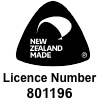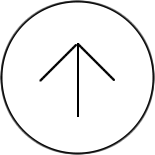Light Reflectance Values
How does sunlight affect colours?
Virtually all of the energy the earth receives comes in the form of radiation from our sun. Without this energy pouring down non-stop the earth would freeze into a lifeless icy rock.
We naturally have a close relationship with visible light as we have, in our eye, a very sophisticated organ that can detect the subtlest nuance in how visible light is absorbed or reflected. The eye detects the presence of different wavelengths and senses them as a ‘colour’. If a substrate absorbs all visible light falling onto it the eye sees this surface as black, and white if the surface reflects all light. All primary colours absorb the wavelengths that the eye doesn’t see and reflects the wavelengths that the eye then identifies.
Measuring LRV?
The light reflectance value (LRV) of a colour, as measured by, for example, a spectrophotometer, is a measure of how much of the visible spectrum of light is reflected by that colour. The simple corollary of this is that the balance of this value (100 – LRV) is an indicator of the light absorbed by the colour. As stated earlier, any absorbed energy will end up as heat.
LRV is crucially dependant on the saturation of the colour and the amount of white or black that colour contains. It is virtually impossible to have a dark colour with a high LRV or a pastel shade with a low LRV.
The LRV of the same shade can be affected by the surface of the substrate. A glossy paint, even a jet black glossy paint will have some specular reflectance from the surface – rather like a mirror. Flat and textured paints do not have this property and reflect only in a diffuse manner.
LRVs are particularly difficult to determine from semi-transparent finishes such as wood stains. Light travelling through these finishes gets absorbed and/or is reflected by the underlying timber. Hence, a stain applied over Pine will also have a substantially higher LRV than the same stain applied over, say Kwila. This is why there is not a standard LRV provided for wood stain colours.
LRV’s and Regional Colour Schemes
LRVs can be quite a useful tool to use in colour scheming buildings in specific environments. An, almost lost, thesis by Tim Heath called ‘Colours for Structures in the NZ Landscape’ measured the LRVs of typical NZ landscapes and recommended sympathetic colours. Some Building Control Authorities (BCAs) will demand LRVs of say less than 25% so that buildings are not too conspicuous in a hilly bush suburb or so that roofs do not cause glare to neighbours looking down on them.
Resene Construction Systems recommends that when selecting a colour in these regions that you consult the Building Control Authority about the suitability of such a colour with cladding solution you have chosen.
LRV Sensitive Building Materials
Higher LRVs are often specified for building systems which may be sensitive to heat. This recognises that absorbed light will convert to heat but does not necessarily take into account the 45% of the sun’s energy emitted in the infra-red range. This can lead to the situation where two colours can have identical LRVs but dramatically different heat build up depending on whether the pigmentation reflects in the IR range (Cool Colour) or not. Resene Cool Colour technology reflects much of the infra-red heat so the colour stays much cooler than its standard colour counterpart even though they both visibly look the same. This is because the total solar reflectance (TSR) of the Resene Cool Colour is much higher than the TSR of the standard colour. In these situations it is the heat reflectance of the colour that is important rather than its light reflectance.
We are still investigating and testing the use of Cool Colours with our building systems.
The mechanical stability of the Resene Construction Systems cladding can be affected by excessive heat and the primary source of heat is from exposure to the sun. The simplest guide to the amount of heat the surface will absorb from the sun is the colour of the finishing coats. Resene Construction Systems Staff or Resene ColorShop staff will offer guidance in this area.
Resene Construction Systems recommended LRV requirements
Fibre Cement Claddings over Steel or Timber Framing – an LRV no less than 40% should be used.
For all other claddings there is no restrictions on LRV (if under 25% use Resene Construction Systems CoolPlast and Resene CoolColours)
Note: The BRANZ Appraisals for the Graphex and EPS Insulated Façade Systems are limited to a minimum LRV of 40% for the finishing system. The BRANZ Appraisals for the Integra Façade Systems are limited to a minimum LRV of 25% for the finishing system. Finishing systems with LRV’s lower than these have not been assessed by BRANZ and are outside the scope of the Appraisals.
Resene Construction Systems CoolPlast and Resene CoolColours
After development, and field testing over the past 10 years we are please to introduce the first CoolPlast™ coating system with our INTEGRA, Masonry & Graphex Facade Systems.
CoolPlast™ was developed with Resene and their CoolColour paint technology as a response to reducing the thermal effects on external plaster facades inturn reducing the characteristic cracking and fading associated with non-treated products. Our first insulated plaster facade using CoolColour technology project was completed in Heathcote Valley, Christchurch in 2003.
One simple way to preserve materials is to refrigerate them. Heat accelerates chemical reactions, including those responsible for the degradation of physical, chemical or optical properties. RCS CoolPlast™ in conjunction with the Resene CoolColour paint system mitigates solar driven thermal build-up and the deamaging effects associated with it. CoolPlast™ reduces thermal stress on the plaster facade
CoolPlast™ in conjunction with the Resene CoolColour paint system reduces the fatigue normally associated with dark colours over plaster facades. Inturn, the incidence of thermal movement of underlying componentry is lessened significantly which results in less stress on the facade system which results in a more durable Plaster Facade System than is currently available in the market.
CoolPlast™ System Guarantee
No ‘colour waiver’ forms. We guarantee the integrity and system performance when using our CoolPlast™ & Resene CoolColour paint system technology.
When to use CoolPlast and using a colour outside Resene Construction Systems recommendations
If you select a colour that has a RV (reflectance value) less than 25%, you will need to advise your plasterer so he can incorporate our CoolPlast render and CoolColour Paints.
If you use a colour beneath 25% and CoolPlast render has not been used then you will need to fill out a form that identifies the colour as being less than 25% RV. If issues arise that are determined to be colour related,such as substrate movement, hairline cracking or other related issues, they are deemed to be not covered by the Resene Construction Systems Performance Guarantee as these types of defects are outside the control of the manufacturers recommendations.
If it is determined that excessive heat build up on or through the system is due to the selected colour remedial works will be the responsibility of the home owner.
NZBC Requirements
The New Zealand Building Code acceptable solution states that colours must not be below an RV of 40%. Resene Construction Systems Facade System are an Alternative solution to the Building Code and as such, requires consent from your Building Control Authority.






